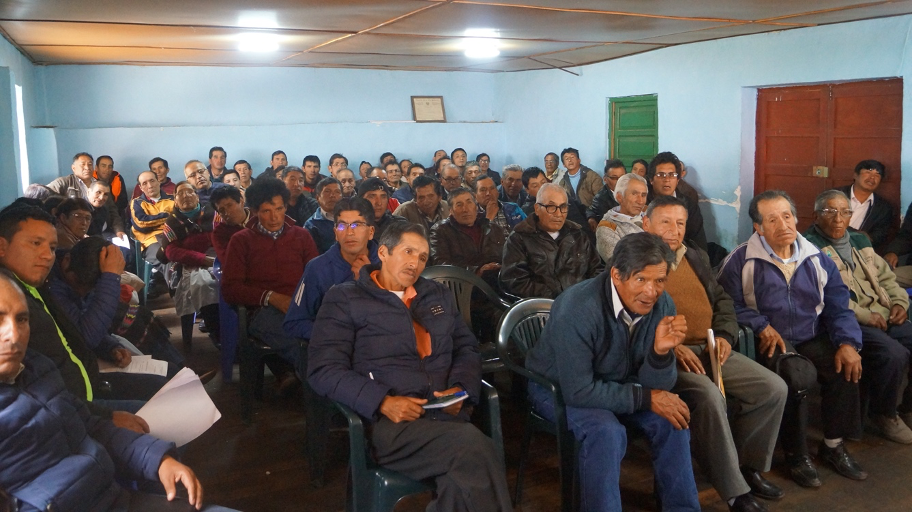

The "Strengthening institutional and community organization" component included numerous work sessions, workshops and planning activities with local authorities, including coordination with organizations in charge of vicuña management, such as the Regional Directorate of Agriculture, the National Agrarian Health Service, the National Forestry and Wildlife Service and the National Service of Natural Areas Protected by the State.
The objective was to strengthen community organization in collective decision making for the management of their natural resources and thus contribute to improving their livelihoods and resilience in the face of climate change.
Overall, these activities have contributed to improving the community's capacity to manage vicuñas and their native grasslands. One example of their improved management capacity is that the community was able to reactivate the Vicuña Committee and develop its work plan. In addition, thanks to the commitment of the community members and the leadership of the vicuña committee, it was possible to expand the fence and build the chaku with the help of community labor, with the support of the team from the Nor Yauyos Cochas Landscape Reserve and the Mountain Institute.
- Common interests among the parties: authorities, community members, RPNYC, project team.
- The 2018-2020 community board of directors committed and assumed leadership.
- The community's interest in vicuña breeding and their initiative to form a working group to lead the sustainable management of these animals.
- Support and commitment from park rangers and RPNYC authorities.
- Commitment from community members.
- Ongoing support through a Mountain Institute facilitator trained in participatory approaches and methods.
- Working on community empowerment and organization is a time-consuming process that is fundamental to achieving long-term results.
- It is key that the field team is trained in the application of participatory approaches, methods and tools and the facilitation of collective learning.
- The people that make up the vicuña committee must have time, commitment, willingness, curiosity and responsibility.
- Procedures to obtain permits for chaku, shearing and sale of fiber take time due to the number of institutions involved. The requirements and timeframes of each institution should be taken into account so as not to delay the process.
- It is advisable to identify from the beginning the people interested in assuming leadership positions, both women and men.
- It is important to keep the Vicuña Committee informed of training events that may occur.
- It is important to work on gender issues, given that women's role in post-shearing fiber management is essential.